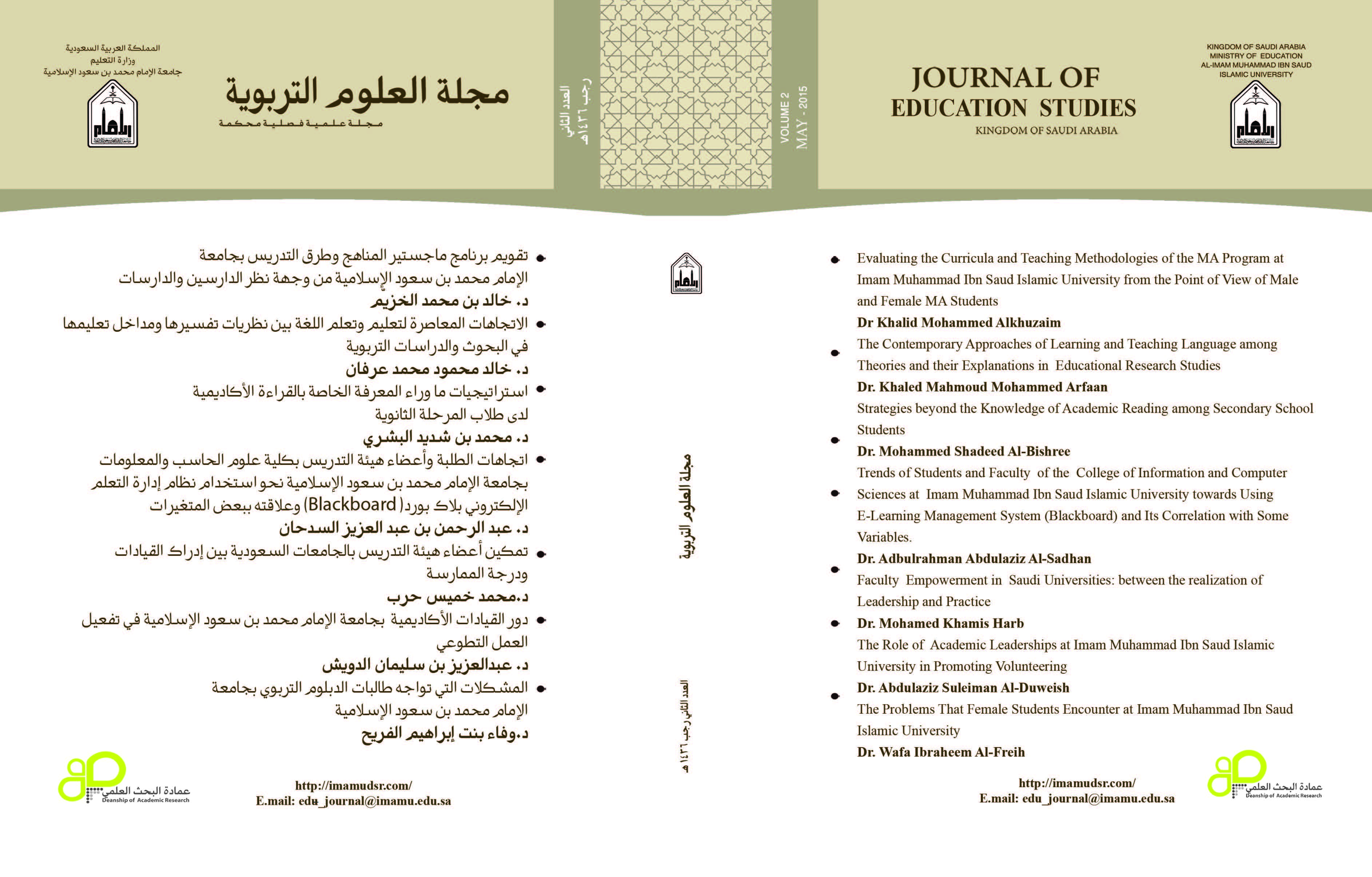Faculty Empowerment in Saudi Universities: between the realization of Leadership and Practice
Abstract
This study aims to reveal the benefits resulting from applying empowerment of both universities and the teaching staff, identify the dimensions of empowering the teaching staff in Saudi universities, observe the extent of awareness of these dimensions by leaderships in Saudi universities, identify the degree of practicing them, and present a proposed view to enhance teaching staff empowerment in Saudi universities. The analytic theoretical study has revealed the dimensions of empowering the teaching staff in Saudi universities: participation in the process of decision-making in university, motivating the teaching staff, developing the personality of the teaching staff, free choice and independence, self-efficiency, the meaning of work, and effectiveness.
The field study has also revealed the following conclusions:
- Saudi universities leaderships have high awareness about the dimensions of faculty members empowerment and its importance.
- Although leaderships in Saudi universities are aware of the importance of the empowerment dimensions, this awareness has not been translated into the required practice. There is a defect in practicing some dimensions, which affects the application of the concept of empowerment. There is a direct relationship between empowerment dimensions and among themselves.
- There are no statistic differences between the average responses of the faculty members regarding three dimensions: developing the personality of the teaching staff, free choice and independence, and effect according to the difference in nationality (Saudi, non-Saudi). However, There are statistic differences in the three dimensions: participation in the process of decision-making in university, motivating the teaching staff, and the meaning of work in favor of non-Saudi teaching staff; while the statistic differences in the self-efficiency dimension are in favor of Saudi teaching staff.
- There are no statistic differences in the practices of leaderships in Saudi universities of the two dimensions of participation in the process of decision-making in university and free choice and independence from the faculty members’ view point according to their educational qualification. However, there are statistic differences in the four dimensions: motivating the teaching staff, self-efficiency, the meaning of work, and effectiveness in favor of professors category. There are also statistic differences in the dimension of developing the personality of the teaching staff in favor of assistant professors category.




